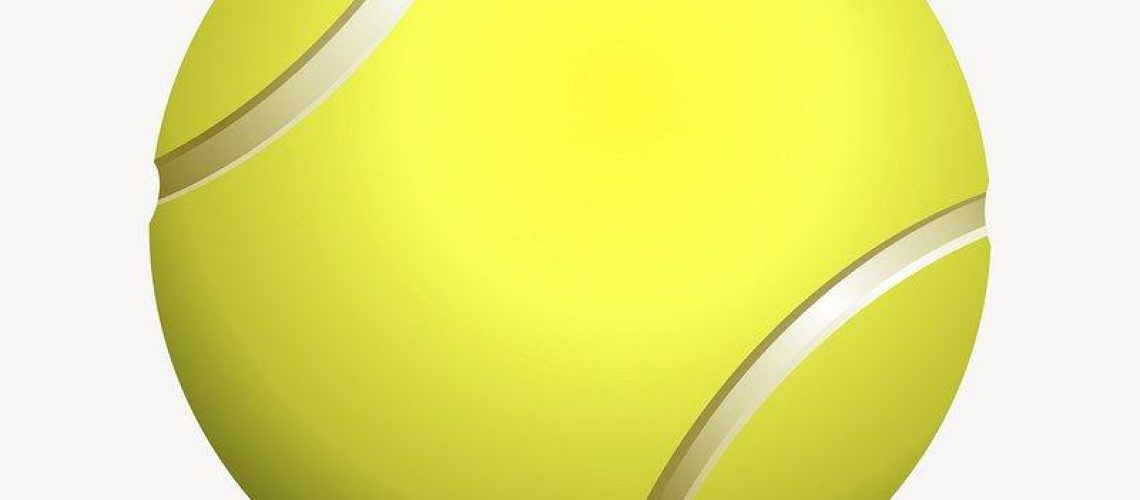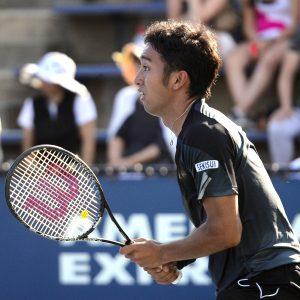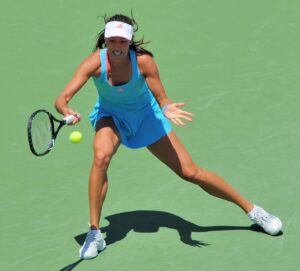We may earn money or products from the companies mentioned in this post.
Introduction to Service Game in Tennis

The service game is a crucial aspect of tennis that sets the tone for each point and can heavily influence the outcome of a match It refers to the act of serving the ball to start a point, with players taking turns as either the server or receiver Understanding the dynamics and strategies involved in the service game is essential for any tennis player looking to excel on the court
Definition and Importance of Service Game
The service game, also known as “serving,” is when a player initiates play by hitting the ball into their opponent’s side of the court The objective is to deliver a well-placed serve that puts pressure on the receiver and gives them an advantage in winning the point The ability to consistently serve effectively can give players control over their matches, allowing them to dictate play from the very beginning
Objectives of a Strong Service Game
A strong service game has several objectives that players strive to achieve:
-
Winning free points:
A powerful serve that is difficult for opponents to return can result in an ace or force an error, instantly granting players valuable points without much effort -
Gaining control:
By serving with accuracy and variety, players can dictate where they want their opponent to move on the court, putting themselves in advantageous positions for subsequent shots -
Setting up opportunities:
A well-executed serve can create opportunities for follow-up shots such as volleys or smashes, allowing players to take control of rallies early on -
Maintaining confidence:
A successful service game not only boosts a player’s confidence but also puts pressure on their opponent who may feel frustrated or demoralized by their inability to break the serve
The Role of the Server and Receiver in a Service Game
The server’s role is to start each point by serving the ball They have the advantage of choosing where to place their serve, ranging from powerful flat serves to strategic spin serves like slice or topspin The server aims to land their serve within the service box on the other side of the net, while simultaneously trying to avoid double faults (missed serves) that result in losing a point
On the other hand, the receiver’s role is to return the serve and try to gain control of the point They must anticipate where the server will place their shot and react quickly with a well-timed return Receivers often employ different strategies such as blocking back hard serves or hitting aggressive returns to put pressure on servers right from the start
Both players’ abilities and tactics during a service game can determine who gains an early advantage, making it crucial for tennis players to develop their serving skills and understand how to effectively counter opponents’ serves as receivers
The Components and Techniques of a Successful Service Game

When it comes to tennis, the serve is undeniably one of the most crucial aspects of the game A well-executed serve can set the tone for the entire match, giving the server an immediate advantage Understanding the different types and mechanics of serves is essential for any player looking to improve their service game
The Perfect Serve: Types and Mechanics
1 Flat Serve:
The flat serve is a powerful weapon in a player’s arsenal It involves hitting the ball with minimal spin, resulting in a fast and direct trajectory over the net This type of serve is commonly used to generate pace and target specific areas on the court
2 Slice Serve:
The slice serve utilizes sidespin, causing the ball to curve away from the receiver This technique can be highly effective in creating angles that force opponents out wide or off-balance The slice serve is particularly useful when aiming for targets near the corners of the service boxes
3 Kick Serve:
The kick serve, also known as a topspin serve, involves imparting forward spin on the ball while simultaneously generating upward bounce upon landing This combination makes it difficult for receivers to attack aggressively or return with power due to its high bounce and unpredictable trajectory
Effective Strategies for Server Advantage
1 Targeting Weak Spots in Receiver’s Game:
An astute server will carefully observe their opponent’s weaknesses and exploit them during their service game By strategically targeting areas where receivers struggle – such as their backhand or vulnerable positions on court – servers can put pressure on their opponents right from the start
2 Mixing Up Serves for Unpredictability:
Variety is key when it comes to serving By mixing up the types of serves they employ, servers can keep their opponents guessing and make it difficult for them to anticipate the trajectory and bounce of the ball This unpredictability can disrupt receivers’ rhythm and give servers a significant advantage
3 Consistency and Accuracy in Serving:
A successful service game requires not only power but also precision Servers must strive for consistent accuracy, hitting their targets consistently Maintaining control over the placement and speed of their serves puts pressure on receivers to make good returns or risk falling behind early in each game
Positioning, Footwork, and Anticipation as Key Skills for Receivers
1 Reading the Server’s Movements and Cues:
Receivers must possess sharp observational skills to read subtle cues from the server’s body language, racket position, and ball toss Anticipating where the server will aim their serve allows receivers to position themselves optimally for returning effectively
2 Proper Positioning for Various Types of Serves:
The receiver’s ability to adapt their positioning based on the type of serve being delivered is crucial For example, adjusting their court position forward or backward can help them handle different speeds or bounces effectively, maximizing their chances of making successful returns
Common Service Game Scenarios and How to Handle Them

When it comes to playing tennis, the service game is a crucial aspect that can determine the outcome of a match It’s during these moments that you need to stay calm under pressure and make strategic decisions In this article, we’ll explore two common service game scenarios and discuss effective ways to handle them
Dealing with pressure situations during a service game (break points, tiebreaks)
Break points and tiebreaks are high-stakes moments in a service game where every point counts To navigate through these pressure situations successfully, it’s important to focus on your mental strength and tactical execution
Firstly, take a deep breath and remind yourself of your abilities Trust in your skills and believe that you can deliver when it matters most Secondly, maintain your composure by sticking to your routine before serving This will help you find a rhythm and keep anxiety at bay
During break points or tiebreaks, consider being more aggressive with your serve placement or adding extra spin to throw off your opponent’s timing By taking calculated risks, you can gain an advantage and put the pressure back on them
Adjusting your tactics based on your opponent’s strengths and weaknesses during a service game
No two opponents are alike on the tennis court, so it’s crucial to analyze their strengths and weaknesses during their service game
-
Focusing on their weak return side (forehand or backhand)
-
Changing pace or spin to disrupt their rhythm
An effective strategy is to exploit your opponent’s weaker return side by targeting it consistently with well-placed serves If they struggle with backhand returns, for instance, aim for that corner of the court more frequently By doing so, you’ll force them into uncomfortable positions and increase your chances of gaining an advantage
Variation is key to keeping your opponent off balance during their service game By changing the pace or spin of your serves, you can disrupt their rhythm and make it harder for them to anticipate your shots Mix up powerful serves with slower ones, or try adding topspin or slice to create different bounces This unpredictability will keep your opponent guessing and give you a strategic edge
Mastering the art of handling common service game scenarios requires practice, adaptability, and mental fortitude By staying composed under pressure and tailoring your tactics to exploit your opponent’s weaknesses, you’ll be well on your way to success on the tennis court
Best Practices for Improving Your Service Game in Tennis

Tennis is a game of skill, strategy, and finesse One crucial aspect of the game that can greatly impact your performance is your service game A strong serve not only puts you in control of the point but also sets the tone for the rest of the match To improve your service game, consider incorporating these best practices into your training regimen
Techniques for mastering different types of serves
To become a formidable server, it’s essential to master different types of serves Practicing regularly with drills tailored towards specific serves can significantly enhance your skills in this area Whether it’s perfecting your flat serve, slice serve, or kick serve, dedicating time to repetitive practice will help develop muscle memory and consistency in execution
An additional strategy to refine your serving technique involves analyzing professional players’ serving techniques By closely observing their footwork, ball toss, grip, and follow-through, you can gain valuable insights and incorporate them into your own style
Tips on how to maintain mental focus during crucial moments in a match
In tennis, mental fortitude plays a vital role in achieving success on the court When it comes to serving under pressure during crucial moments in a match, maintaining mental focus becomes even more critical One effective method is developing pre-serve routines that help calm nerves and establish concentration
Visualization techniques can also be employed to imagine successful serves before stepping up to the baseline By visualizing positive outcomes and focusing on executing proper technique rather than worrying about potential mistakes or failure, you can enter each serve with confidence
Importance of physical fitness, conditioning, flexibility, strength training for developing powerful serves
Your service power largely depends on physical attributes such as fitness, conditioning, flexibility, and strength Regular cardiovascular exercises, like running or cycling, can improve your overall endurance and stamina during long matches
Incorporating strength training exercises that target the muscles used in serving—such as shoulders, core, and legs—can enhance your power and explosiveness Additionally, maintaining flexibility through stretching routines allows for a full range of motion and improved fluidity in your serves
Remember to consult with a professional trainer or coach to design a well-rounded fitness program tailored to your specific needs as a tennis player
Useful Links

Beginners Guide To Tennis
Fun Tennis Game For Kids and Adults – Serve Challenge
Basic Tennis Rules
Tennis Serving Rules 101
Who Serves First In Tennis?
TENNIS RULES
Why is the Serve-and-Volley Game Extinct in Today’s …
TENNIS RULES
How to Serve a Tennis Ball (with Pictures)
What is a Fault in Tennis? Definition, Rules, Tips & Stats
Tennis explained: Learn the game
What Is A Service Break In Tennis?
Tennis – First Serve Game
Tennis rules: Know how to play
Tennis Serving Rules And Receiving Rules in few steps!
Serve | Tennis Clash Wiki – Fandom
Serving






